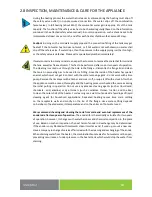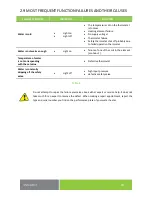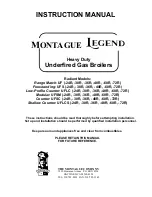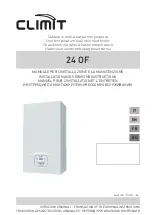
-
4
-
1
PRODUCT TECHNICAL SPECIFICATION
1.1
FUNCTION DESCRIPTION
The heater is designed for the so-called accumulation heating of service water
by electric energy,
or by thermal energy through exchanger. Water is heated by an electric element at a time determined
by the electricity supplier, or by a heat exchanger in an enamelled thermally insulated tank. At the time
of the heating, the element is controlled by thermostat on which the desired temperature can be set (ranging
from 5 and 74°C
)
. Once the selected temperature is reached, heating interrupts automatically. Water
accumulated in the tank is then used for the consumption. The tank keeps constant pressure of water from
the water main. If the combination faucet hot water valve is opened, water from the water supply conduit
pressed out by cold water pressure flows out of the heater. Hot water flows out through the top part, and
water flowing in remains in the bottom part of the heater. The pressure principle allows hot water withdrawal
at any place from the heater.
1.2
ADVICE FOR CUSTOMERS
1.2.1
HOT WATER CONSUMPTION
Consumption of hot water in households depends on the number of people, amount of sanitary
equipment, length, diameter and insulation of piping in the flat, or on individual habits of users.
The cheapest option of water heating comes at the time when the electricity rate is reduced.
Find out in what time intervals your electricity supplier provides reduced tariff and, depending
on that
information, select relevant volume and power input of the heater so that your hot
water consumption covered the needs of your household.
1.2.2
ENERGY SAVING
The heater is insulated with quality polyurethane Freon free foam. Set the temperature
of the heater's thermostat to that level only that you need to run your home. Thus you will
reduce electricity consumption, as well as the amount of lime sediments on the walls
of the receptacle and on the electric body.
1.2.3
EMERGENCY POWER CONSUMPTION
If no heated water is taken from the tank, a small amount of heat leaks. This loss is measured
for a period of 24 hours at the temperature of 65°C in the heater, and at 20°C in its ambient
area. The resulting value is expressed in units [kWh/24h] and indicates the amount of power
needed to maintain the set temperature.





































